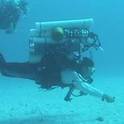
Limnology and Oceanography: Methods published by Wiley Periodicals LLC. on behalf of Association for the Sciences of Limnology and Oceanography. Phytoplankton accessory pigments are commonly used to estimate phytoplankton size classes, particularly during development and validation of biogeochemical models and satellite ocean color-based algorithms. The diagnostic pigment analysis (DPA) is based on bulk measurements of pigment concentrations and relies on assumptions regarding the presence of specific pigments in different phytoplankton taxonomic groups. Three size classes are defined by the DPA: picoplankton, nanoplankton, and microplankton. Until now, the DPA has not been evaluated against an independent approach that provides phytoplankton size calculated on a per-cell basis. Automated quantitative cell imagery of microplankton and some nanoplankton, used in combination with conventional flow cytometry for enumeration of picoplankton and nanoplankton, provide a novel opportunity to perform an independent evaluation of the DPA. Here, we use a data set from the North Atlantic Ocean that encompasses all seasons and a wide range of chlorophyll concentrations (0.18–5.14 mg m−3). Results show that the DPA overestimates microplankton and picoplankton when compared to cytometry data, and subsequently underestimates the contribution of nanoplankton to total biomass. In contrast to the assumption made by the DPA that the microplankton size class is largely made up of diatoms and dinoflagellates, imaging-in-flow cytometry shows significant presence of diatoms and dinoflagellates in the nanoplankton size class. Additionally, chlorophyll b is commonly attributed solely to picoplankton by the DPA, but Chl b-containing phytoplankton are observed with imaging in both nanoplankton and microplankton size classes. We suggest revisions to the DPA equations and application of uncertainties when calculating size classes from diagnostic pigments.
Available at: http://works.bepress.com/emmanuel_boss/21/
